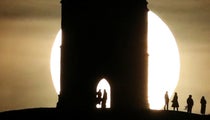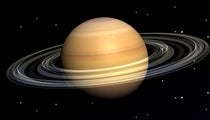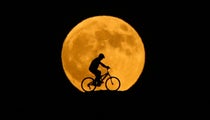Look up at the night sky on Dec. 21 and you may see something truly spectacular.
The planets of Jupiter and Saturn will appear (weather-permitting) on the winter solistice to be so close from Earth that they’ll look like one gigantic shining star, even though they’ll actually be 450 million miles apart.
The so-called “Great Conjunction” last happened in 1623 but could not be seen from Earth. Before that, the phenomenon previously occurred on Mar. 4, 1226.
2020’s celestial event has been christened by some scientists as the “Christmas Star” or “Star of Bethlehem,” due to its proximity to Christmas Day.
“Alignments between these two planets are rather rare, occurring once every 20 years or so, but this conjunction is exceptionally rare because of how close the planets will appear to one another,” said Patrick Hartigan, a professor of physics and astronomy at Rice University.
“On the evening of closest approach on Dec 21 they will look like a double planet, separated by only 1/5th the diameter of the full moon,” Hartigan explained in a statement. “For most telescope viewers, each planet and several of their largest moons will be visible in the same field of view that evening.”
“Look for them low in the southwest in the hour after sunset,” NASA recommended on its website. “And on December 21st, the two giant planets will appear just a tenth of a degree apart – that’s about the thickness of a dime held at arm’s length!”
Viewing conditions will improve the closer people are to the equator.
“The further north a viewer is, the less time they’ll have to catch a glimpse of the conjunction before the planets sink below the horizon,” said Rice. “Fortunately, the planets will be bright enough to be viewed in twi-light, which may be the best time for many U.S. viewers to observe the conjunction.”
It also depends on the weather as to how visible the conjunction will be.
Nahum Arav, a professor of physics at Virginia Tech, described the “rare event” as “special because of how bright the planets will be and how close they get to each other in the sky.”
The two planets will be “easily” seen by the naked eye, he said in a statement. “They will be very close to each other, about a fifth of the moon’s diameter. At their closest, some people will need a binocular to separate them.”
The spectacle will next reportedly occur on Mar. 15, 2080.
After that? Well, it’s a bit of a longer wait — until the year 2400.
https://ift.tt/3a5tg4g
Science



No comments:
Post a Comment